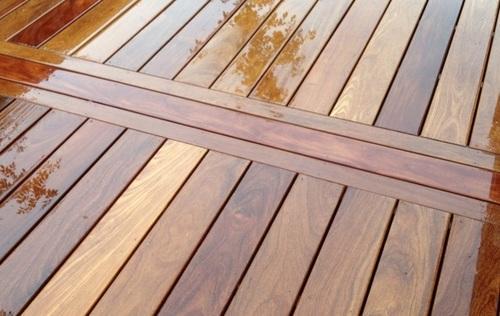Most people use their home decks for a variety of reasons. Some of the most common include extending their living room space, garden landscaping, or outdoor kitchen. Whatever purpose your deck serves, you want it to maintain its pristine nature for the longest time possible. To ensure this, you need an in-depth understanding of your choices regarding decking solutions; This could be anything from initial installation to replacement or restoration. Deck restoration is a great way to increase the longevity of your timber deck even further, and it’s crucial to choose whether you can rely on timber deck restoration services for top-notch results.
Your decking is a significant investment, and choosing the best material should be one of your main priorities. There are more decking materials available in the market now than ever before. Traditionally, decking materials were only made exclusively from various types of wood with varying lifespans. Today, you can choose from more decking material varieties, including PVC and composite. Many factors should inform your choice, longevity being the main one among many homeowners. Others are costs, frequency, and ease of maintenance, among others.
This article will provide all the relevant information you need to know about the life expectancy of wood decking and composite decking to aid in your selection process.
#1: Wood Decking
Wood has been used as a construction material for thousands of years and has been an integral part of human civilization. It can be found easily, but it is also a relatively cheap material for most construction works. Wood has been used traditionally as the sole material for constructing home decks worldwide. Since there are many types of wood, the longevity of wood decking depends on the type of wood used. Softwood varieties will typically have a shorter lifespan than tropical hardwood. Below is a list of 3 common wood decking materials and their estimated lifespans.
- Pressure-Treated Wood
Pressure-treated lumber is the most popular within the category of wood decking materials. They are treated with various chemicals containing insecticides and other anti-rot properties that make them last. They can last between 10-20 years, or even more, depending on climate and the level of maintenance. They are ideal for places with high humidity and can be set up in contact with the ground. You can choose from the many grades available depending on your budget.
- Cedar and Redwood
Cedar and redwood are the most common softwood materials used for deck construction. They are of higher quality than pressure-treated wood and last longer, between 15 and 30 years. The secret to their durability lies in their protective oils that make them resistant to insects and rot alike. It is recommended to have them washed at least once a year to maintain or extend their lifespan. Whether you’re a builder preparing for a project or a lumber store seeking a new supplier, only the best red cedar deck will do.
- Tropical Hardwood
As the name suggests, hardwoods are complex and suitable for decking purposes. Some of the most popular ones include ipe, cumaru, and tigerwood. They are luxurious and durable and have a strong natural resistance to insects and decay. Depending on their quality and maintenance, they can last anywhere between 20-40 years. If you decide to go with hardwood decking, it’s vital to ascertain where they are sourced to get the best density. The higher, the better.
#2: Composite Decking
Composite decking materials are fast becoming the in thing and an alternative to wood in the home improvement industry. From its name, composite decking materials can be made from a blend of various materials, including wood fibers and recycled plastic. They are resistant to multiple environmental conditions, making them way cheaper to maintain than wood decking materials. They are also the most durable and can last anywhere between 30 – 50 years.
Unlike their wood counterparts, composite decking materials require no sanding, sealing, or staining when being installed. You can choose from a wide range of colors, with some mimicking most wood decking material colors. Most composite decking materials feature in-built UV resistance to enable them not to fade or lighten as fast as wooden counterparts. The most common downside with composite decking material is their high cost compared to wood materials. However, this is a trade-off you can make, given the nearly maintenance-free nature of composite decking materials. Choosing a manufacturer based on your personal preferences of composite material constituents is essential. Some manufacturers make composite brands that use up to 90% of recycled materials which is a significant step in reducing carbon in our environment.


























